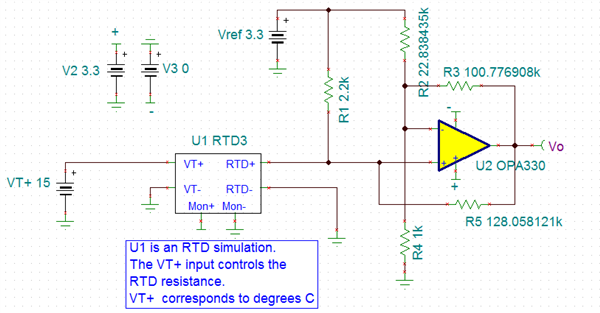Hi. I'm trying to implement a PT100 amplifying circuit with INA826 as the one proposed here (three-wire circuit, figure 6). I've made the following modifications: single-voltage supply (3.3V) and a 1.65V offset, so that the output is between 0 and 3.3). However, when I simulate the circuit in TINA it gives me completely differrent, non-linear outputs, as compared to the calculating spreadsheet provided.
Could you please advice on why I'm not having the desired results?
Thanks!





